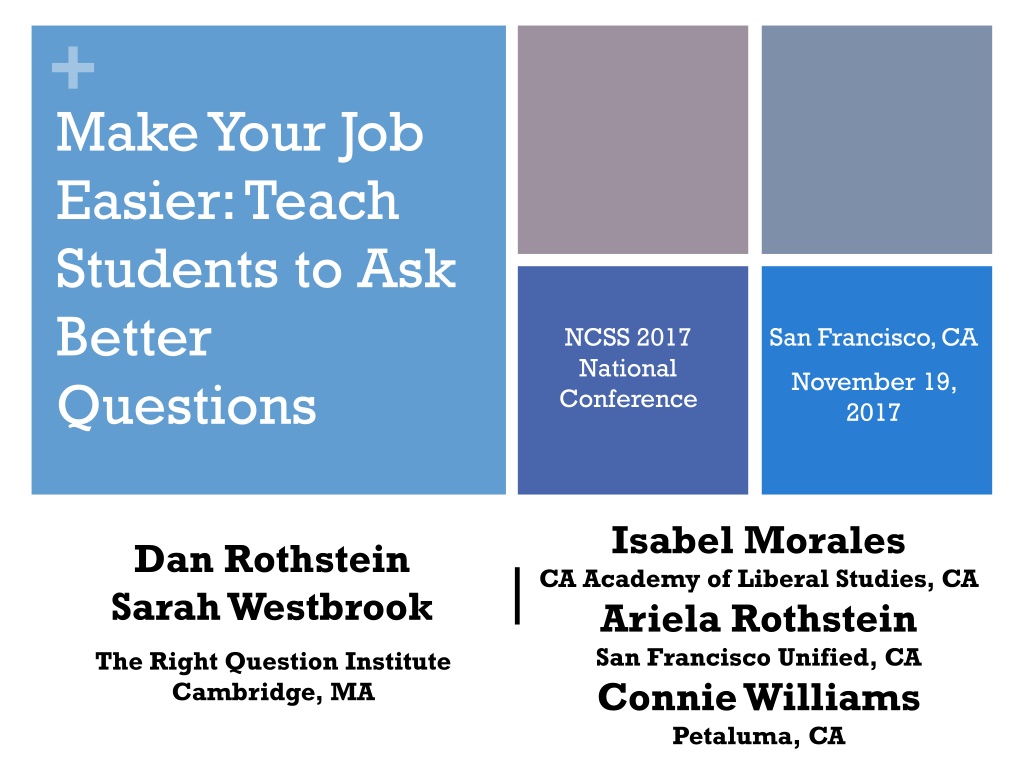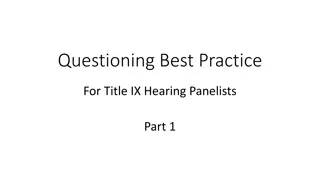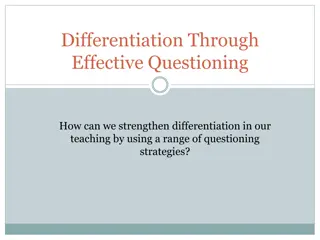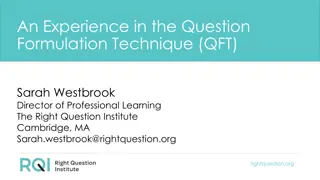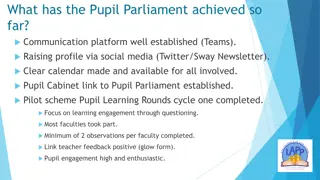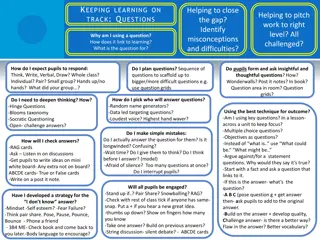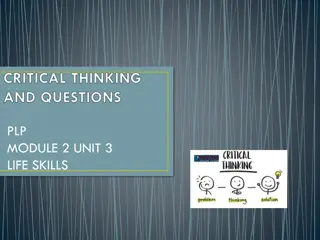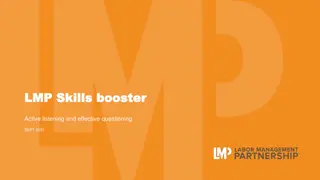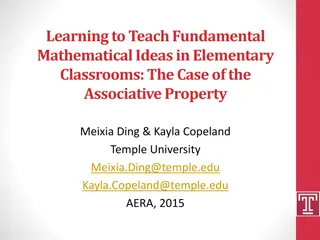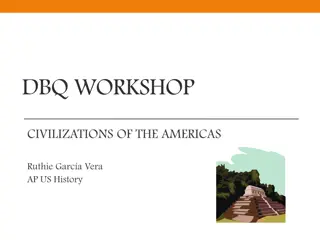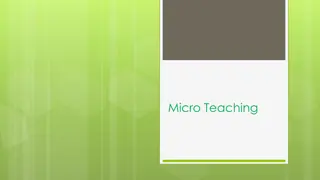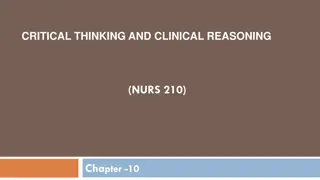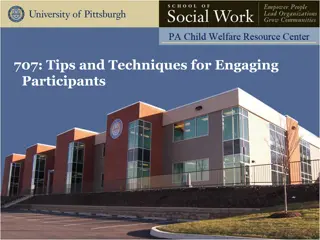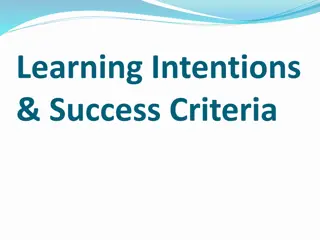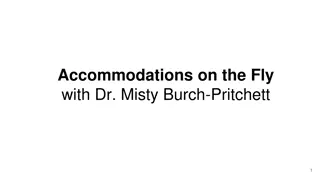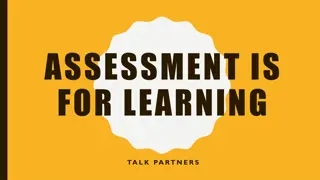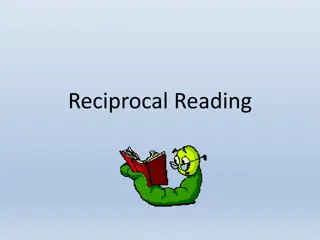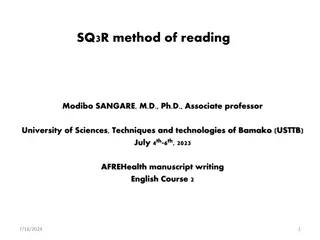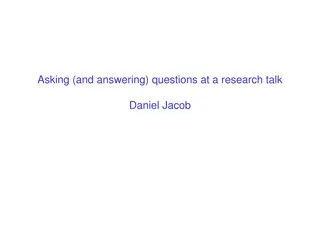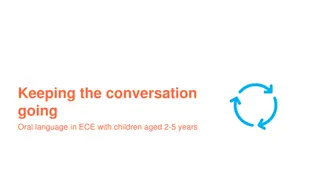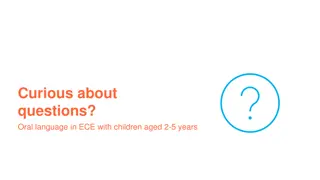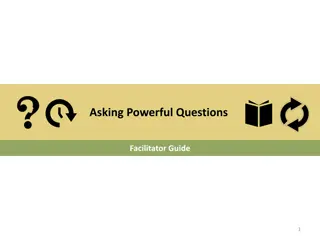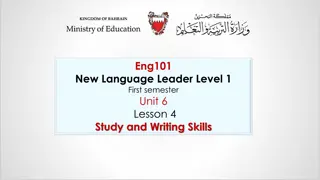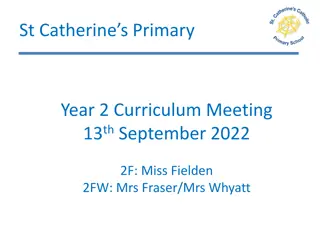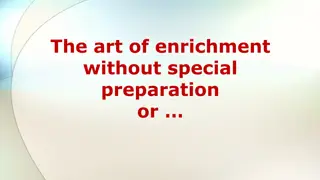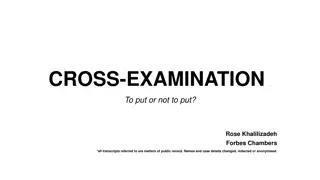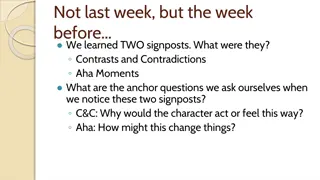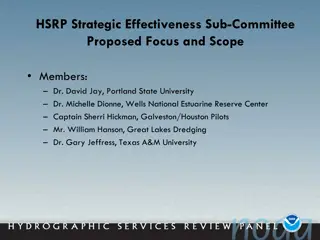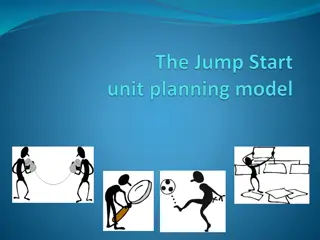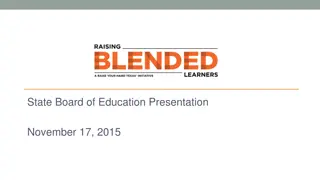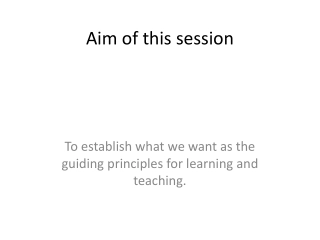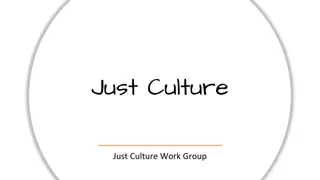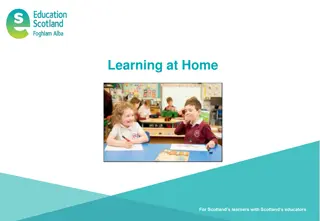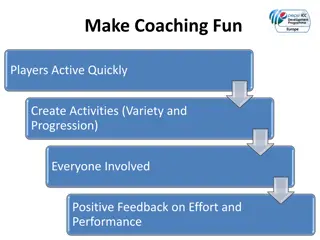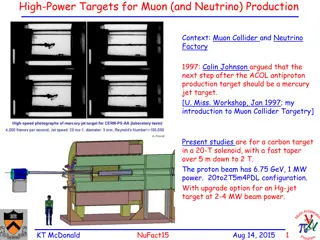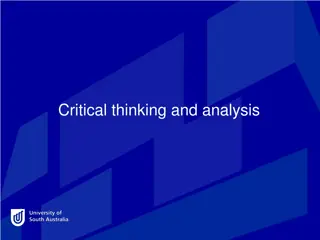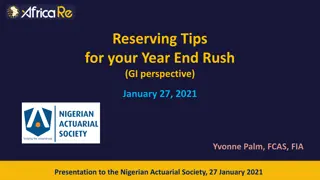Enhancing Learning Through Better Questioning Techniques
Empower educators to boost student learning by teaching effective questioning skills at the NCSS 2017 National Conference. Learn about the Question Formulation Technique (QFT), explore classroom applications, delve into new learning models, and engage in collaborative activities for enhanced student engagement. Gain access to valuable educational materials and join a supportive Educator Network for practical tools and resources. Embrace the power of student questioning for improved learning outcomes based on research findings supporting the impact of self-questioning strategies on student achievement.
Download Presentation

Please find below an Image/Link to download the presentation.
The content on the website is provided AS IS for your information and personal use only. It may not be sold, licensed, or shared on other websites without obtaining consent from the author. Download presentation by click this link. If you encounter any issues during the download, it is possible that the publisher has removed the file from their server.
E N D
Presentation Transcript
+ Make Your Job Easier: Teach Students to Ask Better Questions NCSS 2017 National Conference San Francisco, CA November 19, 2017 Isabel Morales CA Academy of Liberal Studies, CA Ariela Rothstein San Francisco Unified, CA Connie Williams Petaluma, CA Dan Rothstein Sarah Westbrook | The Right Question Institute Cambridge, MA
+ Acknowledgments We are deeply grateful to the Sir John Templeton Foundation and The Hummingbird Fund for their generous support of the Right Question Institute s Million Classrooms Campaign. #NCSS17 #QFT
+ Today s Agenda Welcome and Community Building 1) Collaborative Learning with the Question Formulation Technique (QFT) 2) Explore Classroom Examples & Applications 3) Emerging Ideas about a New Model of Learning 4) Work in Self-Organized Interest Groups 5) Reflection & Evaluation 6) #NCSS #QFT
+ To Access Today s Materials: http://rightquestion.org/educators/ seminar-resources/ Join our Educator Network for: Templates you can use tomorrow in class Classroom Examples Instructional Videos Forums and Discussions with other Educators
+ We re Tweeting @RightQuestion @RothsteinDan #NCSS17 #QFT
+ "There is no learning without having to pose a question." - Richard Feynman Nobel-Prizewinning physicist
We must teach students how to think in questions, how to manage ignorance. - Stuart Firestein Chairman of the Department of Biology at Columbia University
+Research Confirms the Importance of Student Questioning Self-questioning (metacognitive strategy): Student formulation of their own questions is one of the most effective metacognitive strategies Engaging in pre-lesson self-questioning improved students rate of learning by nearly 50% (Hattie, p.193) John Hattie Visible Learning: A Synthesis of Over 800 meta-Analyses Relating to Achievement, 2008
+College Presidents on What Students Should Learn in College The primary skills should be analytical skills of interpretation and inquiry. In other words, know how to frame a question. - Leon Botstein, President of Bard College the best we can do for students is have them ask the right questions. - Nancy Cantor, Chancellor of University of Illinois The New York Times, August 4, 2002
+Yetonly 27%of students believe college taught them to ask their own questions Alison Head, Project Information Literacy at University of Washington, 2016
+ But, the problem begins long before college...
+A 1912 Study Romiett Stevens, 1912 The Question as a Measure of Efficiency in Instruction: A critical study of classroom practice. Columbia University Contributions to Education, No. 48 An unusual lesson because twenty-five of the thirty-four questions were asked by the pupils. The result was that the lesson developed an impetus born of real interest. I mention it because this lesson was unique in the series of one hundred.
+Percentage of Basic Skill Attainment Sources http://nces.ed.gov/nationsreportcard/pdf/main2009/2011455.pdf http://nces.ed.gov/nationsreportcard/pubs/main2007/2008468.asp#section1 Data on question-asking based on parent and teacher feedback
+Percentage of Basic Skill Attainment Sources http://nces.ed.gov/nationsreportcard/pdf/main2009/2011455.pdf http://nces.ed.gov/nationsreportcard/pubs/main2007/2008468.asp#section1 Data on question-asking based on parent and teacher feedback
+ The challenge of promoting inquiry in the classroom Maybe, don t start with the word
+ Classroom Example: Kindergarten Teacher: Jennifer Shaffer, Walkersville, MD Topic: Non-fiction literacy Purpose: To engage students prior to reading a nonfiction text about alligators
+Question Focus Photograph by Nuwan Samaranayake, 2013
+Student Questions Is the alligator camouflaged? Why do the babies have stripes? Are those baby crocodiles? Is it a mom or dad crocodile? What is the green stuff? Why are they in the water so low? 1. 7. Where are they going? 8. Why are the baby alligator s eyes white and the mom s black? 9. Why are baby alligators on top of the momma alligator? 10. Why does momma or daddy have bumps on them? 2. 3. 4. 5. 6.
+ Classroom Example: 4th Grade Teacher: Deirdre Brotherson, Hooksett, NH Topic: Math unit on variables Purpose: To engage students at the start of a unit on variables
+Question Focus 24 = + +
+Student Questions 1. Why is the 24 first? 2. What do the smiley faces mean? 3. Why are there 3 smiley faces? 4. How am I suppose to figure this out? 5. Is the answer 12? 6. Can I put any number for a smiley face? 7. Do three faces mean something? 8. Do the numbers have to be the same because the smiley faces are the same? 9. What numbers will work here? 10. Does it mean 24 is a really happy number? 11. Can we replace each smiley face with an 8? 12. Do any other numbers work? 13. Can we do this for any number? 14. Does it always have to be smiley faces? 15. Do we always have to use three things?
+Next Steps with Student Questions Questions posted on classroom walls. Students cross off the questions they answer during subsequent lessons. Teacher returns to student questions at the end of the unit to discuss with students what they learned and what they still want to know.
+ Classroom Example: Middle School Teacher: Megan Harvell, Boston, MA Topic: American History The Civil War Purpose: Pre-reading activity to engage students
+Question Focus Image by John L. Magee, 1856
+Student Questions 11. Why are you taking a pen? 1. Why are they fighting? 12. Why are they in court? 2. Are they fighting? 13. Who hit who first? 3. Are they part of the government? 15. Who died? 4. Where were they? 16. Why are they smiling? 5. Who are they? 6. Were they signing anything? 7. Who else was there? 8. Why are you hitting him? 9. Why didn t they call 911? 10. Was this related to slavery? 11. Why is he hitting him with a bat?
+ Working on a Challenge by Using the Question Formulation Technique (QFT)
+Rules for Producing Questions 1. Ask as many questions as you can 2. Do not stop to answer, judge, or discuss 3. Write down every question exactly as stated 4. Change any statements into questions
+Producing Questions 1. Ask Questions 2. Follow the Rules Ask as many questions as you can. Do not stop to answer, judge, or discuss. Write down every question exactly as it was stated. Change any statements into questions. 3. Number the Questions
+Question Focus: Some students are not asking questions. Please write this statement at the top of your paper. Remember: Number the questions. Follow the rules.
+Categorizing Questions: Closed/ Open Definitions: Closed-ended questions can be answered with a yes or no or with a one-word answer. Open-ended questions require more explanation. Directions: Identify your questions as closed- ended or open-ended by marking them with a C or an O.
+Discussion Closed-ended Questions Advantages Disadvantages
+Discussion Open-ended Questions Advantages Disadvantages
+Improving Questions Take one closed-ended question and change it into an open-ended question. Closed Open Take one open-ended question and change it into a closed-ended question. Closed Open
+Strategize: Prioritizing Questions Review your list of questions Choose the three questions you consider most important. While prioritizing, think about your Question Focus: Some students are not asking questions. After prioritizing consider Why did you choose those three questions? Where are your priority questions in the sequence of your entire list of questions?
+Strategize: Next Steps From priority questions to action plan In order to answer your priority questions: What do you need to know? Information What do you need to do? Tasks
+Share 1. Questions you changed from open/closed 2. Your three priority questions and their numbers in your original sequence 3. Rationale for choosing priority questions 4. Next steps
+ Reflection What did you learn? How did you learn it? What do you understand differently now about some students not asking questions?
+ Exploring Classroom Examples
+ Classroom Example: High School Teacher: Ling-Se Chesnakas, Boston, MA Topic: 12th Grade Humanities unit on The Brief Wondrous Life of Oscar Wao by Junot Diaz Purpose: To help students generate questions for a Socratic Seminar at the end of the unit
+The Question Formulation Technique (QFT) in Action http://rightquestion.org/qft-in-action/
+The QFT, Information Literacy, and the Research Process Connie Williams National Board Certified Teacher Librarian Petaluma, CA
+Research is a Process Research comes out of an information need. We encounter information needs all the time. No matter what our information need is: the process is the same The only way to help kids want to complete the research you have assigned...is to help them create their own compelling questions. We utilize inquiry questions all the time: What movie should we see today? What computer [bike, phone] should I buy? How will I complete all my homework on time? What do I need to do in order to get to college? Who are the 3 most influential authors of the 20th Century?
+Teaching Information Literacy Teaching Information literacy within a content area gives practice to the steps of the research process. Our task: to teach those steps. Turning information need statements: I want to go to Iceland Write an essay on the French Revolution Dig & Dive into the topic to gather content information into questions, allows us to focus on what weconsider to be important within that topic. Head out to the great beyond and question your sources
Example: High School Debate Team Context: Students are preparing to debate. They want authentic TRUE information. They want me to tell them Exactly. Where. That. is. Question Focus: Resolved that the United States screen immigrants for extremist ideological views. Student Questions: What are extremist views? How are we screening now? What kinds of extremist views are there? What about homegrown extremist views? How might we screen immigrants differently? What would happen if we didn t let anyone in anymore? Don t we already have a good system? Why are we re-building something that isn t broken? How do we know if it s broken or not? Next Steps: Student questions for the evaluation of sources: Who wrote this? For what purpose was this written? How do they want me to feel? How do they want me to act? What are the sources of their numbers, charts, or other evidence? Can we trace them back to their creator? and then question the purpose and authority of those numbers also.
QFT in the Classroom as a + Primer for Difficult Reading Ariela Rothstein Instructional and Professional Development Coach San Francisco Unified School District, CA Social Studies Teacher (2010-2017) Brooklyn Public Transfer High School (NY)
+Literacy Strategy: Priming Students to Read a Difficult Text Why a pre-reading strategy? Increasing background knowledge or assessing interest in the topic ahead of time increases engagement and perseverance prior to reading a difficult text There s a big focus in Common Core and state standards on reading grade-level appropriate materials - often not reflecting the reality of the reading level range in the classroom. Then, there s pressure to differentiate to every student s reading level - not reflecting the reality of a teacher s workday So What? QFT is an excellent strategy for a differentiated, critical thinking method for priming students for a challenging reading
+Classroom Example Question Focus: Being Young, Muslim and Arab in America
+Student Questions In 2013 1. Why do Arabs pray 7 times a day? 2. Why do Arabs own cornerstores? 3. [o->c] Do all Arabs own a corner store? 4. Why do female Muslims wear head scarves? 5. Why do Arabs have long hair? 6. Why do they come to the US? 7. [o->c]Do you find the US to have better opportunities? 8. Why do they have so many kids? 9. Why do they cut the little girls hair? 10. Why do Muslims believe in a different God? 11. Why don t Muslims eat pork? 12. Why does everyone go to jail and become Muslim? 13. Why did they really blow up the World Trade Center? In 2015 1. Did you know the US see you as terrorists? 2. Did you know Trump about to ban most of your beliefs? 3. What s your side of the story about the terrorists attacks? 4. Do you have a side of the story?
